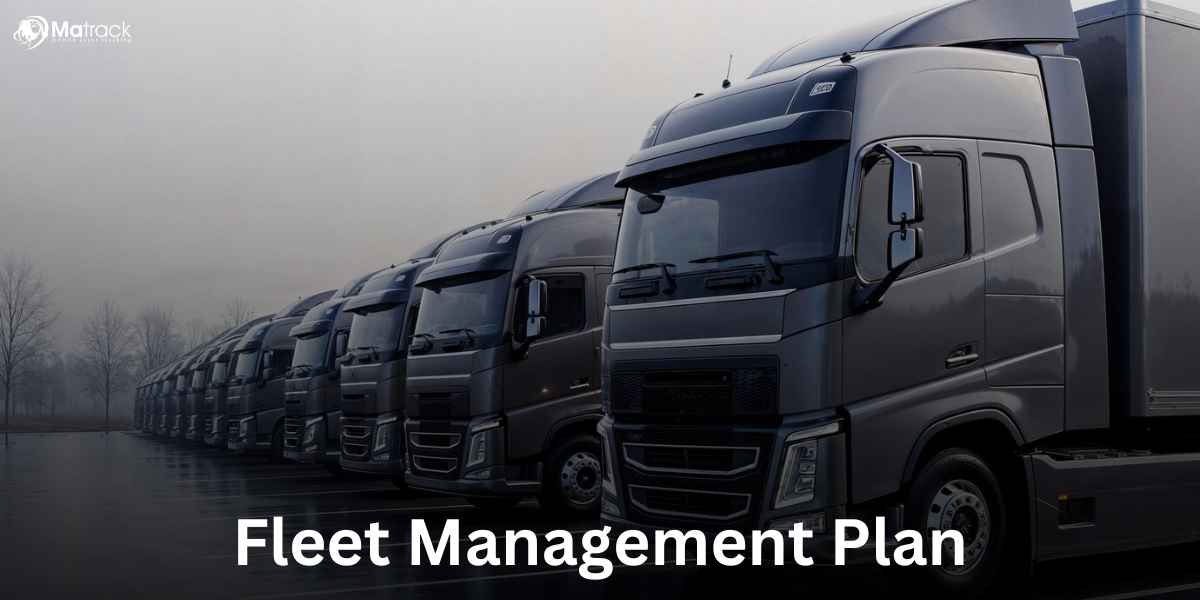Key Takeaways:
- Outsourced fleet management lowers costs and offers faster scalability by relying on third-party services.
- In-house fleet management gives full operational control but demands higher investment and internal expertise.
- There are 7 core differences between the two models including ownership, cost, control, and risk.
- Matrack improves fleet performance through GPS tracking, ELD devices, and dash cams.
What is Outsourcing in Fleet Management?
Outsourcing fleet management means hiring an external company to take care of your business vehicles. This outside company handles tasks like tracking, maintenance, fuel use, and driver schedules.
It helps businesses save time and reduce costs by letting experts manage the fleet. Instead of doing everything in-house, companies rely on professionals who already have the tools and experience.
What are the Key Characteristics?
No Asset Ownership
Outsourced fleet management removes the need to invest in trucks, vans, or trailers, as vehicles are leased or fully managed by third-party providers. This model frees up capital and removes the burden of asset depreciation from the company’s balance sheet.
Third-Party Expertise
Specialized logistics providers bring their own trained staff, compliance systems, and industry knowledge to manage your fleet operations. This eliminates the need to hire internal experts for complex regulatory tracking, routing decisions, and maintenance planning.
Variable Cost Model
Outsourced models use a pay-as-you-go approach, often based on mileage, delivery volume, or service levels. This gives businesses the ability to align fleet expenses directly with operational demand instead of locking into fixed overhead costs.
On-Demand Scalability
Third-party fleets offer rapid scaling, enabling businesses to increase or reduce vehicle usage within days. This flexibility supports seasonal demand spikes, sudden market expansions, or unexpected delivery volumes without infrastructure changes.
Benefits and Challenges of Outsourced Fleet Management
| Benefits | Challenges |
| No upfront vehicle purchase costs | Limited control over daily operations |
| External experts handle legal compliance | Risk of vendor failure impacting service continuity |
| Fast scaling for peak seasons | Generic services may lack industry-specific customization |
| Lower internal staffing requirements | Communication gaps can affect delivery accuracy |
| Predictable, variable cost structure | Less flexibility for route personalization and brand representation |
What is In-House Fleet Management?
In-house fleet management means a company owns and operates its own vehicles using internal staff and systems. The business handles everything directly, drivers, routes, fuel, repairs, and compliance are all managed inside the organization.
This approach gives full control over how deliveries are made and how vehicles are used every day. It works best for businesses that have steady delivery needs, long-term plans, or specific service requirements that demand consistency.
What are the Key Characteristics of In-House Fleet Management?
Fleet Ownership
The company buys and maintains its own vehicles, making them part of its long-term assets. These vehicles stay under direct control, from daily use to eventual resale or replacement.
Full Control
Every decision around dispatch, routes, and delivery timing is made by the internal team. This gives the business a strong grip on service quality and helps solve issues without delays.
Technology Investment
Companies managing fleets in-house usually rely on tools like GPS systems, ELD devices, and vehicle health monitors. These tools keep drivers compliant, reduce breakdowns, and make it easier to track every mile.
Employee Drivers
Drivers are hired directly by the business and treated as part of the core team. This setup encourages consistency, better communication, and a stronger connection to the company’s values.
Benefits and Challenges of In-House Fleet Management
| Benefits | Challenges |
| Full control over routing and delivery | High upfront costs for vehicles, insurance, and equipment |
| Consistent brand visibility through fleet | Requires experienced staff to manage routing and daily operations |
| Lower costs over time through asset use | Maintenance delays can disrupt schedules and reduce efficiency |
What Are the 7 Major Differences?
1. Ownership of Assets
In-house fleet management involves the company owning and depreciating its own vehicles. In an outsourced model, the provider either owns or leases the vehicles used for operations.
2. Operational Control
Companies with in-house fleets make all routing and scheduling decisions internally. Outsourcing limits that control since daily operations are handled by the third-party provider.
3. Cost Structure
In-house fleets come with high fixed costs such as vehicle purchases, driver salaries, and ongoing maintenance. Outsourced fleets reduce these upfront costs but introduce recurring payments tied to usage.
4. Scalability Speed
Scaling an in-house fleet takes more time because it involves buying new vehicles and onboarding new drivers. Outsourced providers allow fast scaling by using their existing fleet and resources.
5. Expertise and Compliance
In-house operations depend on internal experts to manage legal requirements and transportation regulations. Outsourced providers already have trained teams to handle compliance and safety standards.
6. Technology Use
Companies managing their own fleet invest in software like GPS tracking, fuel management, and driver behavior tools. Outsourcing includes access to the provider’s technology without additional setup or maintenance.
7. Risk Allocation
With in-house management, the company bears the full risk of accidents, delays, and legal issues. In outsourcing, those risks are shared or transferred to the fleet service provider through contracts.
Which Model Is Better?
There isn’t one model that fits every business perfectly. The right choice depends on what your company needs, how you operate, and what resources you already have.
Choose in-house fleet management if control matters most to you. It’s the better route when you already have logistics know-how and your operations are complex or time-sensitive.
Go with outsourcing if keeping costs low is a priority. It’s a smart move when your team isn’t built for logistics or when you need the ability to scale up quickly.
Cost Comparison Snapshot
| Category | In-House | Outsourced |
| Upfront Cost | High | Low |
| Monthly Opex | Predictable | Variable |
| Maintenance | Internal | External |
| Fuel Management | Self-managed | Included (usually) |
| Risk Burden | Full | Shared |
Improve Your Fleet Management With Matrack
Matrack’s GPS fleet tracking helps you see where every vehicle is in real time. This makes it easier to manage routes, reduce delays, and improve delivery timing.
Matrack’s ELD devices keep your fleet compliant with driving hour rules and safety regulations. They automatically log driver activity and reduce paperwork for your team.
Fleet dash cam from Matrack gives you full video visibility into what happens on the road. They help protect your business from false claims and improve driver accountability.



